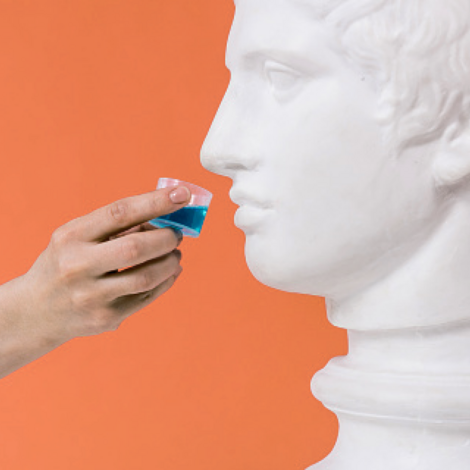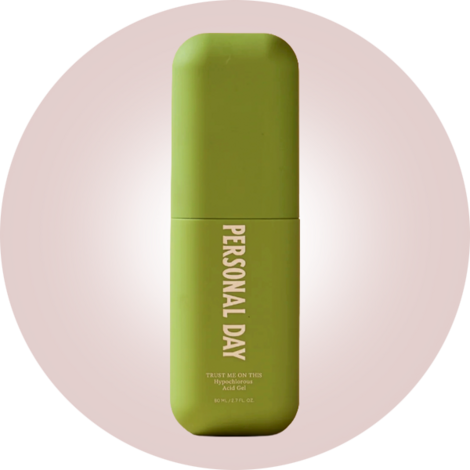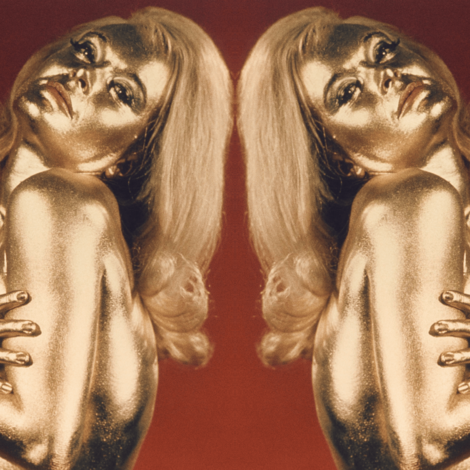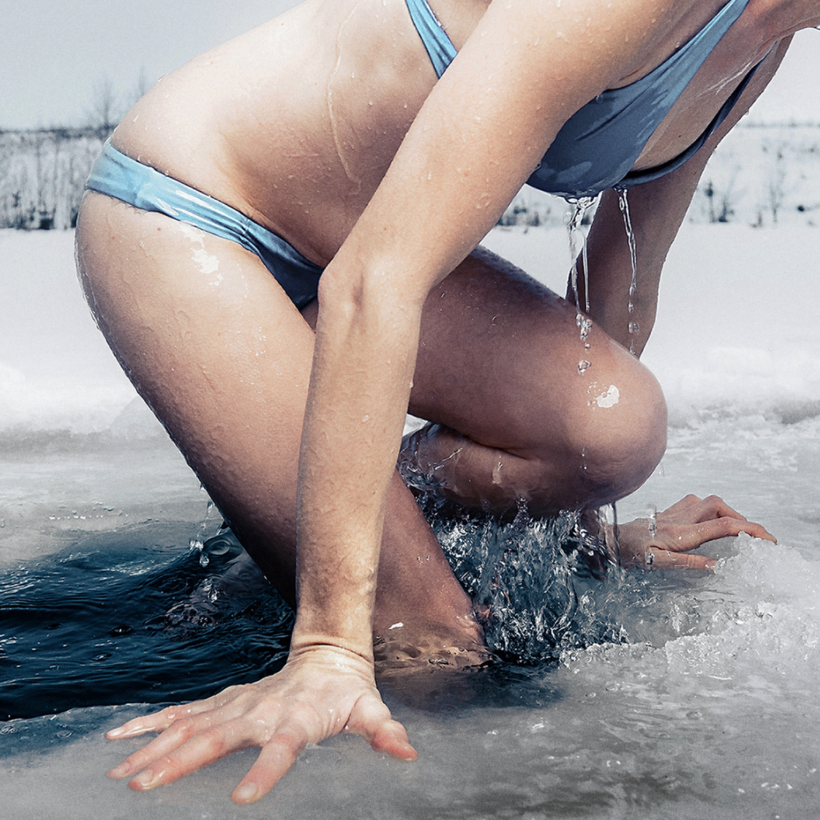You will say every bad word you’ve ever heard. Then you’ll start compounding them. A bespoke vocabulary of fury. You will believe you are literally freezing to death, and you won’t even notice that you just misused “literally.” Thoughts will splinter from your brain like shards of ice. And you will pay for the privilege. I know all this because I did it—nearly 4,900 feet above sea level, cocooned in the snowy ravines of the Swiss Alps at a brand-new spa in a brand-new resort, opened by the Six Senses in the village of Crans-Montana, where, among many other health-and-wellness extravagances, there is a cold pool chilled to 10 degrees (Celsius. It sounds more appropriately painful than 50 degrees Fahrenheit, which is also accurate.)
Submerge your body for two minutes, I was told. This pool will energize you, they said. It will reduce inflammation and kick-start a lagging circulatory system; it can treat hypertension, injury, and all kinds of ailments, they tell you. This pool will make you live longer!
I stood on the top step of a pool. (“Top step” is generous. I was ankle-deep, and I had been there for four seconds.) It was terrible, but I was determined. Here goes nothing. I put my hands in, too. Well, not both hands. I’m not insane. First my left. Pause, shiver, cry. Then the right. And there I was: bent over a freezing plunge pool like I had lost my keys on the first step. That’s as far as I could go. Maybe I don’t want to live that long.
Cold-exposure therapy is not new. In fact, it’s as old as time. What’s new is our enthusiasm for it. Every spa from the top of the Alps to the flats of Arizona has myriad ways to shiver your timbers. Remedy Place in New York has something inhospitably called the Ice Bath Studio, where your “mental and physical fortitude meet” in a 39-degree (Farenheit) pool. Some spas offer cold-stone therapy—a kind of sadistic massage punctuated by shockingly cold hits of pain. Other spas have ice fountains—sort of like movie-theater concession stands of discomfort. In Sweden, it’s common practice to go from sauna to snow in the winter months. And any Norwegian worth his reindeer skin knows what it is to jump out of a floating sauna and into the waters of the fjords.
Then there’s cryo. As in cryotherapy, cryofacial, cryoforhelp. The New York Dermatology Group describes their cryotherapy chamber as “a luxury device that evenly reduces body temperature over the course of one to three minutes in order to achieve a number of attractive benefits.” In the past few years, the phenomenon has gone from something bizarre and fringy to accepted scientific fact.
“Our comfort zone, in the long term, weakens us,” says Win Hof, author of The Wim Hof Method. If you have heard anything about cold temperatures outside of the forecast, you’ve probably heard of him. We slip into what’s comfortable, and it causes all the diseases, according to Hof.
Hof describes how once you go into the cold, you can see the result—it is amazing. You stimulate your arteries and veins through the cold. The heart can pump more blood. People who regularly go into the cold, they don’t get sick when they are 70 or 80 years old. Cold is not terrible; diseases are terrible, he says. Cold makes your body much more alert—our immune systems and our cardiovascular systems are built to face the cold. But over time we have learned to make ourselves comfortable, and he says that this is the problem.
Hof is a huge part of the reason that we have come to care so much about cold therapies, cold treatments, cold as medicine (as opposed to cold medicine—very different) in recent years. The method boils down (sorry) to three parts: breath work, meditation, and cold exposure.
“I was 17,” he recalls. “It was a Sunday morning, and I saw a thin layer of ice on the canal, and it just attracted me.”
“I was deep into philosophy, and I was very much thinking I wanted to go into the water,” he says. “Sometimes you get an irrational feeling, and you are driven to go to it. That’s what I did. All my questions were answered when I went into the water. It’s like when you fall in love. I fell in love with a life force. I came to the surface and into my awareness. If it had to put it into words, it would be ‘This is it.’ All day long I had this rush,” Hof says, although he was only in the water for one minute.
“Since then, 46 years ago, I take my ice bath every day. It gave me a connection to a lost kind of experience,” he says.
The 63-year-old Dutchman is a champion of near-freezing temperatures. He set the record for highest ascent on Mount Everest in shorts and holds a Guinness record for the fastest half-marathon run barefoot on snow or ice. He is an ambassador for cold the way spinach is an ambassador for leafy greens. And the science is on his side.
You may have a lot of questions. First: How cold are we talking? Well, generally anything between 45 and 65 degrees. Second: How long do I have to stay in there? Well, the colder the water, the shorter the time you need to be in it to get the benefits. Cold therapy—whether it’s going up to your neck in a 50-degree pool for 15 seconds, or weeping under the coldest setting in your shower for two minutes—has been linked to increased resilience, better moods, decreased inflammation, even a boost in metabolic rate, said Andrew Huberman, on his cult biohacking podcast for non-crazy people, Huberman Lab. He’s a neuroscientist and professor of neurobiology and psychiatry at Stanford University, so he should know.
Research has found that people who spent an hour in 60-degree water had significant increases in dopamine, and people who could stand 20 seconds in 40-degree water had a significant boost in adrenaline, according to the Huberman Lab. Furthermore, deliberate cold exposure is great training for the mind. There is also evidence that regular cold therapy can help to reduce fat. So if you want to be hot, in other words, consider getting really cold.
Whether you’re spending thousands to find out what minus 85 degrees Celsius feels like or you’re diving into a frozen lake in Finland for the cost of an ice saw, the idea is the same: make yourself cold—not goose-bumps-chilly, but legitimately miserable—and you’re on your way to being more alert, more focused, more energized. And we haven’t even gotten to all the good things it’s doing to your mitochondrion.
“It’s life force,” says Hof. “Cold water makes our ancient brain feel alive.” It is what life is about, he says. People discover their inner strength. If inflammation or depression is coming, the cold is a remedy. After cold exposure, you feel more alive, more invigorated, more connected to your ancient brain, according to Hof.
If you’re the kind of person to stand on the top step of a plunge pool looking for imaginary keys, Hof suggests starting even more slowly. Before you turn off your shower, turn it to the coldest setting for 15 seconds. The next day, do it again for a little longer. And so on and so on, until you can build up enough stamina to handle two minutes in an icy bath. “If you don’t like it afterwards, blame me,” he said. “But not before.”
So I did it. I’ve been following his advice every day. I’m up to 19 seconds.
Danielle Pergament is a Madrid-based writer. The former editor of Goop, she frequently contributes to The New York Times





